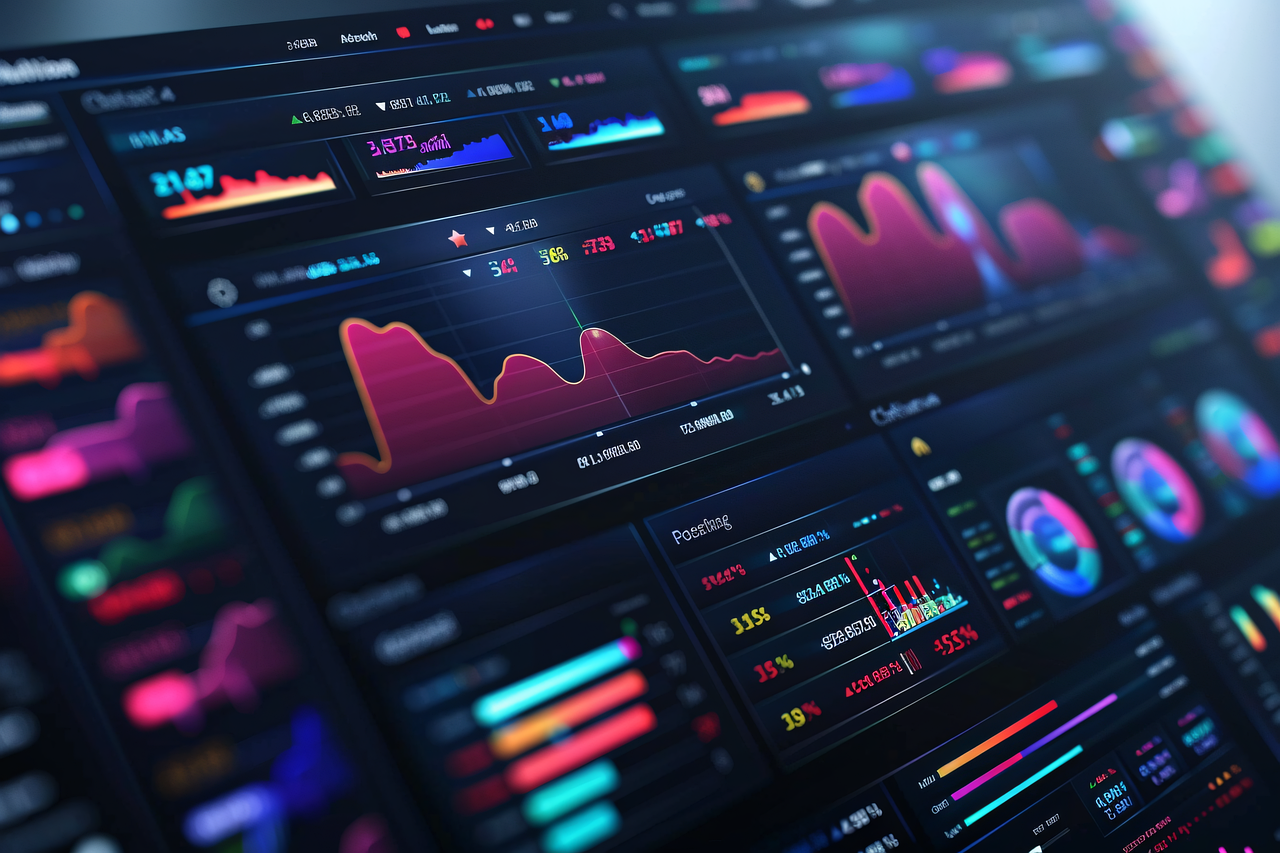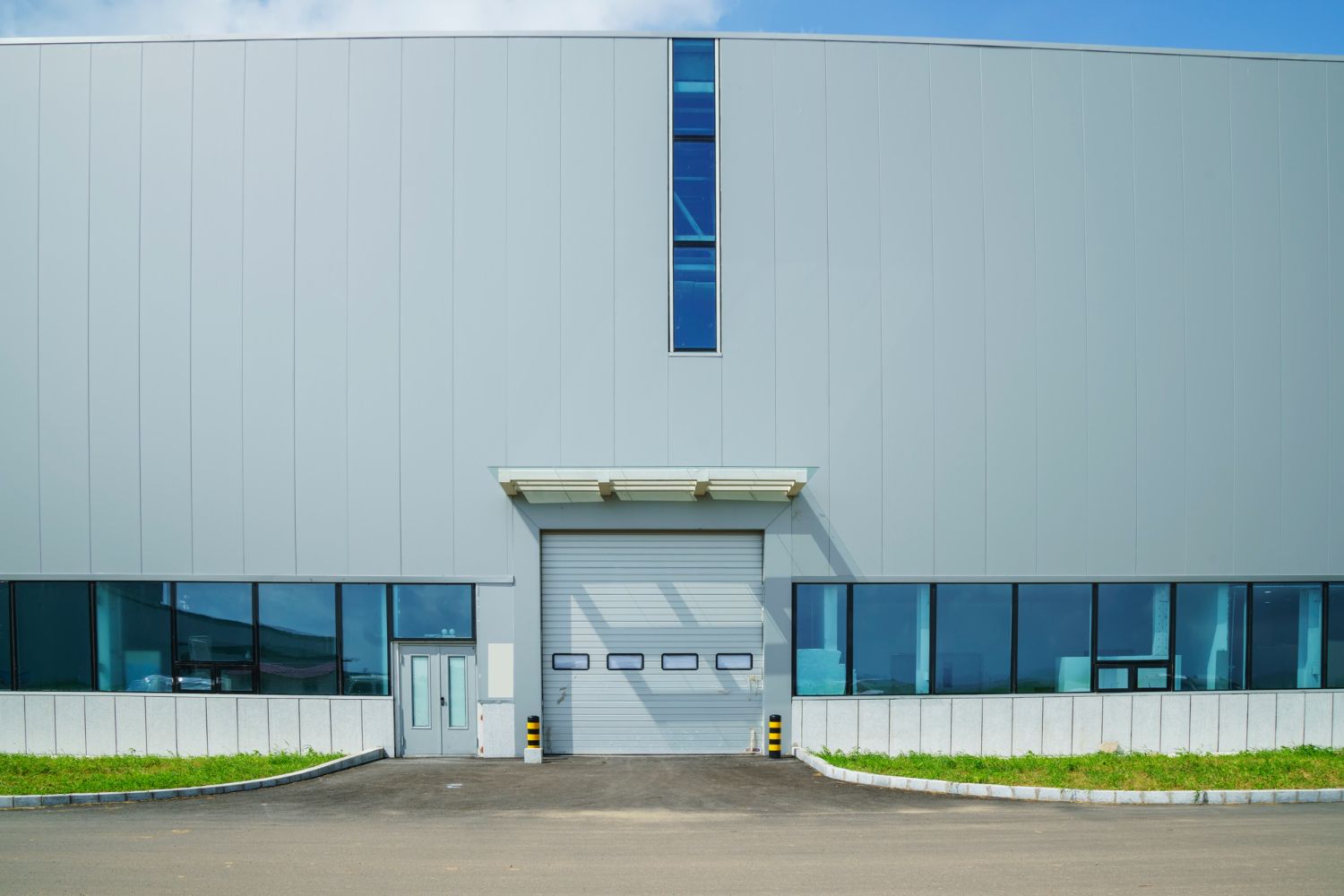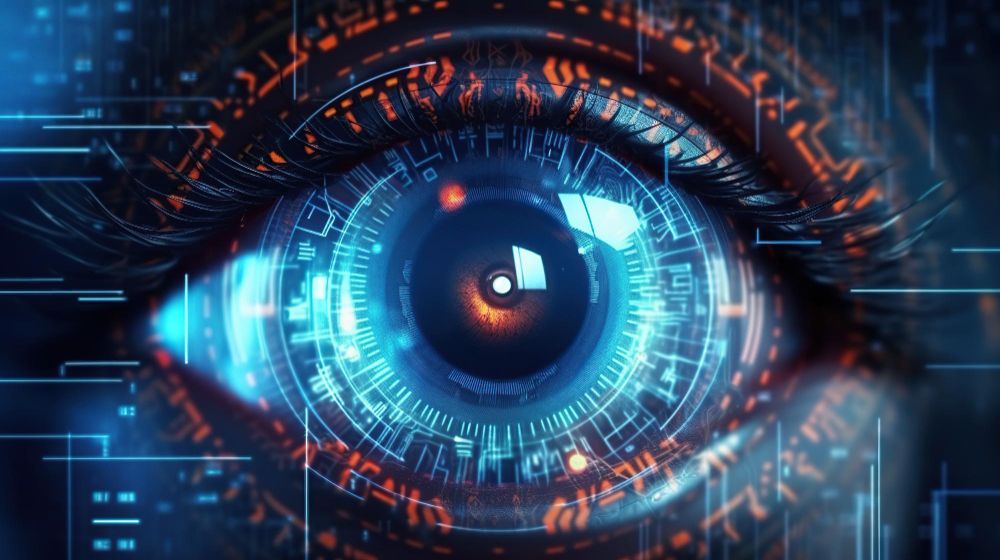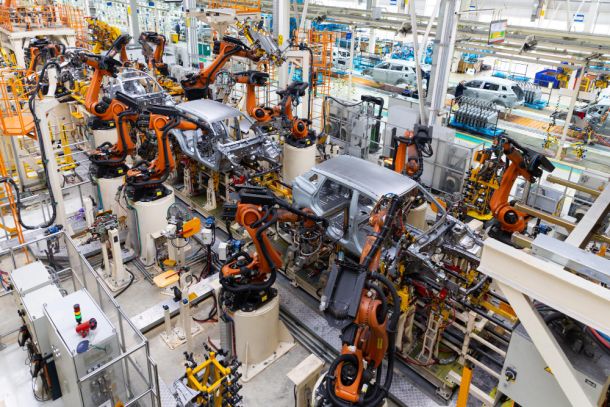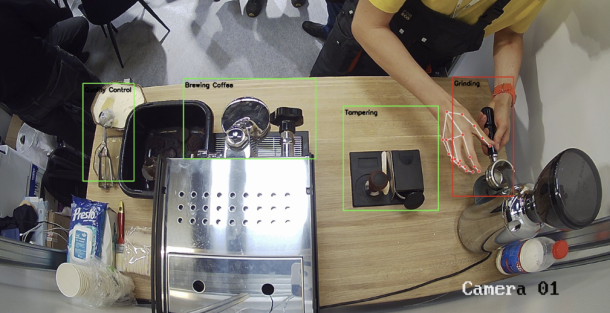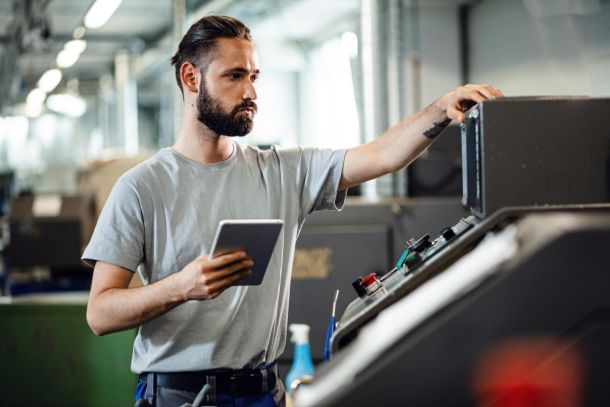Machine learning in manufacturing
Table of Contents:
Introduction: 1353 manufacturers proved the efficiency of technologies with artificial intelligence
How artificial intelligence works
What is the role of artificial intelligence in manufacturing
10 successful examples of ai for profitable growth
- Automation in manufacturing is not only about robots
- Machine learning is useful in case of assuring better quality
- AI teach a lesson how to optimize machinery supply chain
- Machine learning for predictive maintenance software
- Artificial, but intelligent digital twins
- Elusive reason why should fabrication engineers participate in generative design
- Artificial Intelligence for Asset Performance Management
- How can AI help in manufacturing for demand forecasting
- Manufacturing execution systems
- Pull inventory management in factories
Is it beneficial? The future of machine learning and artificial intelligence
The number of industrial companies that use AI for automation have increased twice compared to the 2021-2022 (according to the 8th Annual Rockwell Report). What is interesting to know is how the usage of AI in future helps to achieve profitable growth in manufacturing industries. 1353 manufacturers took part in the survey, and 95% of them claimed that they have improved sustainability over the two years after investing in technologies.
How artificial intelligence works
Artificial Intelligence is the simulation of human intelligence processes by machines, especially computer systems. For example, a person notices a pallet in a plant and understands: “This is a pallet. Not a hammer, not a tank, but a pallet.”
Processes in human thinking allow a person to attribute an object to a certain category. Similarly, computer algorithms create a thinking process, but for machines. Machine learning allows the processing of video streams from cameras, when a machine detects the above-mentioned pallet and categorizes: ”it is a pallet”.
All the data displays on the dashboards, so it can be beneficial for engineers to control the workload of the area remotely and manage it in a short notice.
No panic, mathematical methods of Machine learning in simple terms
What are these algorithms that allow machines to recognize objects in manufacturing, as we humans do?

They’re called machine learning algorithms. In order for a machine to detect and recognize a pallet on a production line, 1000 examples of what a pallet looks like should be loaded. The computer processes this uploaded data (so called "training data"), identifies patterns and automatically creates a mathematical model of the pallet.
It describes the pallet in the form of points, vectors and other mathematical objects. When the computer camera captures an object with the same set of points/vectors in the factory, it processes the data and comes to the following conclusion (for example): “Mathematically, this object is the same as the uploaded pallet model consisting of 1000 images. In this case, the object is a pallet”.
A machine uses a certain algorithm when analyzing this or that model and performs the task relying on programmed patterns. It turns out that we have trained the machine to recognize objects. This is how machine learning works.
There are other cases, when Machine learning and artificial intelligence solutions are used. Besides video analytics, AI can be applied to process data of any kind: text, voice, images. Software helps to automate operations that staff carried out manually before.
What is the role of artificial intelligence in manufacturing
Artificial intelligence (AI) and machine learning (ML) are revolutionizing the manufacturing industry by transforming machinery and production processes. The integration of these advanced technologies is providing manufacturers with innovative solutions, enhancing productivity, and driving industrial growth. Let's explore some examples of how AI and ML are reshaping the manufacturing landscape.
Go on investigation of 10 successful examples when AI technology drives beneficial transformation in manufacturing companies!
1. Automation in manufacturing is not only about robots
Automation is one of the key areas where AI and ML are making significant contributions. Companies in various industries are adopting AI-driven technologies to automate their factories and streamline production processes. Intelligent machines and robots equipped with AI algorithms are being deployed to handle complex tasks, improve efficiency.
Machines, driven by artificial intelligence and machine learning, are the future of industrial engineering, as they bring numerous benefits to manufacturers, however it is only one example for automating industrial operations.

Another way to instill automotive approach lies through integrating AI technology into smart devices that acquire and process operating data. In general, using artificial intelligence in order to bring the work of the mechanism of collecting data is like placing a robot in manufacturing settings to perform tasks. Although technology is harnessed to perform human-like tasks, there are no human errors, it works consequently, step by step according to prescribed algorithms, thus bringing benefits by mitigating risks.
By leveraging artificial intelligence, companies can achieve increased production rates, improved product quality, and reduced costs. AI-powered analytics enable manufacturers to gain valuable insights, optimize processes, and make informed decisions to enhance overall production efficiency.
2. Machine learning is useful in case of assuring better quality
A case study for quality assurance is physical products inspection and defects detection. It is cheaper to reduce a problem at the root rather than to reduce errors later, and quality engineers will not argue it.
Thanks to on-time automotive notifications of abnormalities, there are less losses on redoing in factories that are equipped with technological devices powered by artificial intelligence. Computer vision maximizes product quality thanks to performing on-time inspection and notifying when something goes wrong. Usually such software is integrated into video surveillance systems. It captures the product moving on the assembly lines and recognizes defects in real time.
3. AI teach a lesson how to optimize Machinery Supply Chain
The benefits of AI and ML in manufacturing extend beyond production processes. These technologies also have a significant impact on supply chain management. By leveraging AI-powered analytics, manufacturers can optimize inventory levels, improve demand forecasting, and streamline logistics. This ultimately leads to reduced costs and enhanced customer satisfaction.
AI-powered systems assemble data from numerous departments within the industrial enterprise to sync demand and supply. It helps to mitigate risks of interrupting processes due to the lack of sufficient number of components.
4. Machine learning for Predictive Maintenance Software
There is no secret that each item, equipment, and tools have a lifespan. Although we are unable to prolong it, we can prevent organizational assets from being damaged or worn out untimely by means of constant monitoring of the conditions of inventory, facilities, equipment and other resources. Artificial intelligence is widely applied in order to meet industrial needs for tracking and managing data concerning existing resources in manufacturing, and automate these activities.

5. Artificial, but intelligent DIGITAL TWINS
The metaphoric name “Digital twin” clearly reflects the genuine idea of the technology. It creates a virtual copy of a real physical object duplicating all its characteristics and functions. Digital replica makes it possible to implement continuous improvements to processes and observe outcomes. It doesn’t interfere with ongoing real-time operations, all the actions and changes are happening in virtual reality, that is why the risk of causing damage by making changes is mitigated.
6. Elusive reason why should fabrication engineers participate in generative design
AI and ML technologies are finding applications in designing and fabricating manufacturing technologies. By utilizing AI algorithms, manufacturers can develop optimized designs, simulate production scenarios, and ensure efficient utilization of resources. This leads to reduced fabrication time and costs while maintaining high-quality standards.
7. Artificial intelligence for Asset Performance Management
With the advent of impactful AI / ML analytics, methods applied in manufacturing before to measure system reliability and availability now become automated. It means that real-time operational KPI (throughput, uptime etc.) are expressed in easy-to-understand charts. Technological solutions powered by AI combine process, operational, employee and equipment data and displays on dashboards, so executives can control the situation without physical presence in manufacturing facilities.
Production monitoring software ensures that operations continue without any sudden changes, interruption or difficulty. Such systems deliver transparent data about real-time operational KPIs such as Overall Equipment Effectiveness and so one. Fabricants can put this analytics into practice and make actionable decisions towards improving sustainability and prosperity.
8. How can AI help in manufacturing for Demand forecasting
Demand forecasting is an essential business tool. It avoids overhead costs for the finished products that were not sold. Industrial companies meet customers' needs on time and without overproduction.
AI is used for creating trend models for forecasting. Information is usually represented in the form of charts. The trend allows us to characterize processes in the dynamics. Since other factors have an impact, you can compare several charts to identify what factors influence the certain process most. This method allows us to study the trend and forecast efficiency of manufacturing operations based on it.
9. Pull Inventory management in factories
Pull Production is a technique to upgrade throughput of machinery and end up with overproduction in manufacturing companies. Let’s consider a case in a factory. When a downstream workstation almost finishes the operation and needs resources to continue the process, it provides the information to the upstream workstation about what material is needed, in what quantity, in what facility. Fabricants can do it manually: they constantly keep an eye on the process in manufacturing settings and register any updates and needs in the ERP system. More convenient to use software and monitor production remotely via AI sensors that transmit data from one piece of machinery to another about what resources are needed. The key is that there are no supplies till there is no request.

10. Manufacturing execution systems
Another case when machine learning is used in addressing production optimization is its application in Manufacturing execution systems (MES).
To track the status of raw materials till they become finished goods. Such systems deliver real-time valuable insight to make improvements to quality and quantity of produced items.
AI technology is integrated into devices that acquire and process operating data. It allows Fabricants to monitor asset conditions and view reports to make actionable decisions for a company's growth.
Is it beneficial? Future of Machine Learning and Artificial intelligence
Looking towards the future, the potential impact of AI and ML in manufacturing is immense. Advancements in technology will continue to drive innovation, and manufacturers will increasingly rely on AI to improve their production capabilities. AI-driven robotics, advanced analytics, and predictive maintenance will become even more prevalent, enabling companies to achieve higher levels of efficiency and productivity.
Artificial intelligence and machine learning are transforming the manufacturing industry by revolutionizing machinery, automating processes, and optimizing production. Companies that embrace these technologies and leverage AI-driven solutions stand to gain a competitive edge. The future of manufacturing lies in the effective integration of AI and ML, as they drive innovation, improve efficiency, and enable manufacturers to adapt to the evolving demands of the global market.
We at 5controls are excited to share that our software is FREE. We believe in the power of technology to drive sustainable manufacturing practices, and we want to make this accessible to all.
For more details about our software and to get started, we invite you to visit our GitHub page. Join us in shaping the future of manufacturing. Together, we can make a difference.







